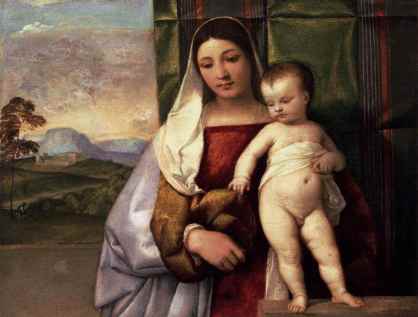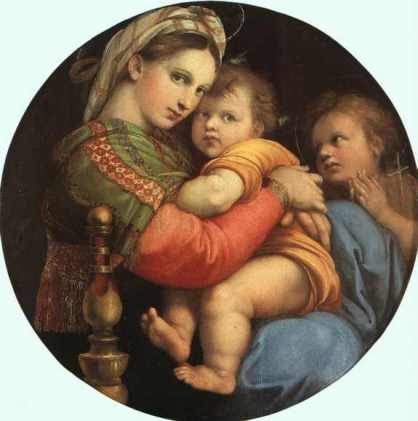Today we are celebrating the Dormition of the Mother of God, Theotokos, and I want to share with you some of my favorite images of Her. I will start from the North of Europe, and the turn from Gothic to Early Renaissance. The direction is from North to South.
The North begins with Jan van Eyck, the Master who opened the way for the rejuvenation of art in the north, for the decisive transition from the Gothic to the Renaissance. His influence is visible in the works of all the Masters who succeeded him.

Rogier van der Weyden was an Old Master who following the lead of van Eyck, pioneers Early Renaissance in Northern Europe (second half of 15th century).

This extraordinary study of the head of the Virgin is one of very few surviving drawings that can be attributed with any certainty to the early Flemish masters, and one of an even smaller number of drawings with a generally accepted attribution to Rogier van der Weyden. Its extreme sobriety and intensity of expression are utterly characteristic of van der Weyden’s work.
Source: Louvre Museum, Prints and Drawings, Head of the Virgin

Martin Schongauer was a follower of van der Weyden and a superb engraver. He was born and worked in the town of Colmar in Alsace. The Madonna in a Rose Garden is his masterpiece. It can be seen in the Dominican Church, in Colmar.

Matthias Gruenewald was one of Schongauer’s students. His masterpiece is the Isenheim Altarpiece, to which I have dedicated a separate post. In this post I want to present another of his major works, the Stuppach Madonna.
Around 6 km/4 miles from Bad Mergentheim’s old town in the suburb Stuppach is a small, unremarkable chapel that houses a remarkable painting, the Stuppacher Madonna. This painting of Mary with Child was removed from the Maria Schnee Kapelle in Aschaffenburg during the 1525 Peasants’ War. It remained in the hands of the Teutonic Order until it came to this chapel in 1812.The Stuppacher Madonna was long thought to be the work of Rubens. Only in 1908 was it recognized as one of the pieces from the Marienaltar (Mary Altar) and the 1519 work of the great German Renaissance painter Matthias Grünewald. (A second piece of the altar is in Freiburg, while Aschaffenburg only has copies.)
Source: European Traveller, Top Sights in Bad Merghentheim

And in order to remember the Isenheim Altarpiece, here is a detail from the Nativity panel.
- Matthias Gruenewald: Madonna and Child, detail from the Nativity panel
We are now going south, to meet the Italian Masters, and a Greek who became Spanish.
I begin with Lorenzo Monaco, whose brilliant colors make him one of the pioneers of Renaissance in Italy. See in the picture below how wonderfully the pink becomes the dominant color of the picture, eliminating the black. The picture is practically flat, maintaining in this respect the Byzantine tradition.

Giovanni Bellini, the Venetian Master, with his solemn Madonna is next. I love the use of green in the painting, it becomes the center of the harmonies and works superbly with the pale blue of the sky and the ultramarine of Madonna’s dress.

Young Rafaello, with his Madonna del Granduca, gives us a masterpiece in the study of black. In this he anticipates Caravaggio and chiaroscuro.

Titian, turns the tables and presents a dark haired pale woman as his Madonna, named the Gypsy Madonna. She is like a an ordinary girl carrying a huge burden. You notice the green curtain in the background, tribute to Giovanni Bellini.

Rafaello a few years later gave us the Madonna of the Chair, a much more vivid and “alive” painting, where the faces almost jump out of the canvas to reach us.

El Greco, the Greek, Dominikos Theotokopoulos, started his life in Crete, and via Venice ended in Toledo, Spain.

El Greco lifts us up in the skies and the clouds and the greyness of the storm that is about to come. El Greco does not use the domestic environment used by the other artists. He belongs in the sky, and this is what he paints.

Back to where it all started. the most fitting end of all.
We traveled from the North to the South, from the Earth to the Skies, from the simple, ordinary faces of everyday women, to the incredibly beautiful faces of sheer perfection. Next trip will be from the West to the East.











